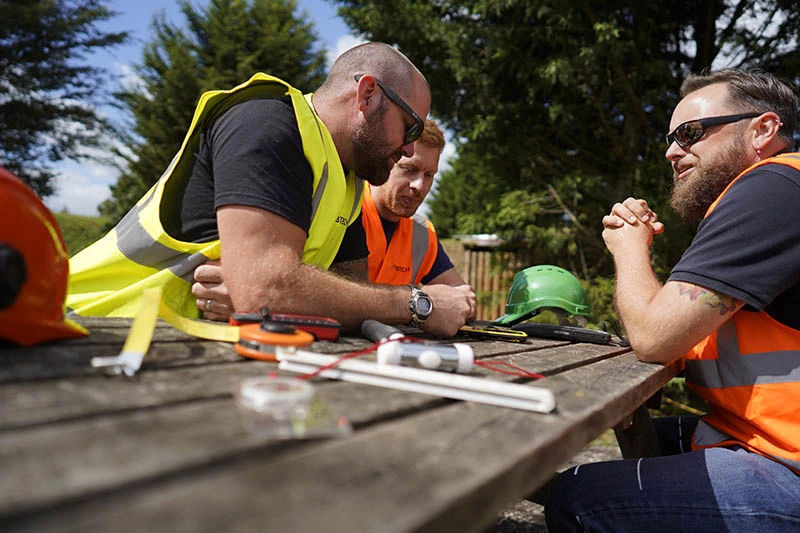Support with contamination issues: recommended environmental consultants
What is a Phase 1 Contaminated Land Assessment?
This assessment, also known as a Phase 1 Preliminary Risk Assessment, is an essential environmental study conducted to determine whether land is at risk of contamination. It identifies possible sources of contamination, evaluates the associated risks, and determines whether a further more comprehensive assessment is necessary.
A Phase 1 assessment is a non-intrusive study, meaning it does not involve soil or groundwater sampling. Instead, this preliminary risk assessment relies on a desktop study, site visits, and consultations with regulatory authorities to assess the environmental condition of the land. The primary objective is to establish whether the site poses a risk to human health, controlled waters, property, and the wider environment.

When is a Phase 1 Contaminated Land Assessment needed?
A Phase 1 assessment is typically required in several situations, including:
- Property transactions: Developers, investors, or buyers may require this preliminary risk assessment before purchasing a particular site to determine any contamination risks and potential liabilities that may affect its proposed use.
- Planning applications: Local planning authorities often require a Phase 1 report before granting planning approval, particularly for sites with historical industrial use. A qualitative risk assessment will help a developer to discharge a planning condition imposed by a local authority.
- Due diligence for lenders and insurers: Banks, financial institutions, and insurance companies may request a Phase 1 preliminary risk assessment before approving loans or providing coverage for a site.
- Regulatory compliance: Landowners or operators may need a Phase 1 preliminary risk assessment to ensure compliance with environmental laws and regulations, especially when redeveloping brownfield sites.
- Environmental risk assessments: Businesses operating on or near potentially polluted land may require environmental data from a preliminary risk assessment or contaminated land survey to mitigate unacceptable risks.

Steps in a Phase 1 Contaminated Land Assessment
A geo-environmental consultancy follows a structured approach when conducting a Phase 1 assessment. The key steps are:
1. Desk study
The desk study involves gathering historical, geological, hydrogeological, and environmental data about the site. This includes:
- Historical maps: Identifying past uses of the land that may have led to contamination (e.g., industrial sites, landfill areas, fuel stations).
- Environmental databases: Reviewing records of pollution incidents, waste disposal sites, and permits held by regulatory bodies.
- Geological and hydrogeological data: Assessing the underlying geology, groundwater vulnerability, and proximity to sensitive receptors (e.g., rivers, aquifers).
- Planning records: Examining local authority planning archives for details of previous developments and environmental concerns.
2. Site walkover (site reconnaissance)
A qualified geo-environmental expert conducts a site visit to assess the environmental setting and:
- Observe current ground conditions and land use.
- Assess potential sources of pollution sources such as fuel tanks, chemical storage, asbestos, or evidence of past industrial activities.
- Identify pathways and receptors that could be impacted (e.g., nearby watercourses, residential areas, sensitive ecosystems).
- Interview site owners, workers, or other relevant stakeholders to gather additional information about the site’s previous uses.
3. Preliminary Risk Assessment
The consultant evaluates the findings from the phase 1 desk study and site walkover to create a Conceptual Site Model to help with further assessment. The conceptual site model:
- Identifies potential contamination sources.
- Defines pathways or pollutant linkages through which contamination might spread.
- Determines receptors that may be affected (e.g., humans, water supplies, buildings, flora, and fauna).
- The preliminary risk assessment categorises the level of risk posed by the site and concludes whether further investigation is necessary depending on the proposed use for the site.
4. Reporting and recommendations
The consultant compiles all the detailed information required into a Phase 1 report, which includes:
- A summary of historical and current site conditions.
- A detailed risk assessment based on the Conceptual Site Model.
- Recommendations on whether further work is needed to provide more environmental data.
- An evaluation of regulatory implications and potential remediation measures if necessary.

Next steps after a Phase 1 Contaminated Land Assessment
After completing a Phase 1 assessment, there are two possible outcomes:
- No further action required: If the assessment finds no significant contamination risk, further investigation is not necessary, and a development project or property transaction can proceed without restrictions.
- Phase 2 intrusive site investigation required: If the conceptual site model and report identified contamination sources, additional information will be required. This detailed review involves an intrusive investigation to take samples of soil and groundwater to assess different ways that pollutant linkages may occur; testing for ground gases might also take place. Further risk assessments will determine the extent of contamination and whether remediation is required.

Legal framework and regulatory compliance
Several key environmental regulations govern land contamination risk assessments in the UK:
The Environmental Protection Act 1990 (Part IIA): The Environmental Protection Act 1990 establishes the legal framework for dealing with contaminated sites. Under Part IIA, local authorities have a duty to identify such sites and ensure remediation is carried out where necessary. Landowners and developers may be required to remediate contaminated areas to make them safe for use.
Environmental Agency and planning regulations: The Environment Agency and local planning authorities play a crucial role in overseeing contaminated land issues. Key regulatory frameworks include:
The National Planning Policy Framework: This requires developers to ensure that a proposed development is suitable for use without posing unacceptable risks to the environment.
Contaminated Land Statutory Guidance (DEFRA): Provides detailed criteria for determining whether land is legally defined as “contaminated” and outlines the responsibilities of landowners, developers, and regulators.
Water Resources Act 1991: Governs pollution control and ensures that contaminated sites do not harm groundwater and surface water resources.
The Town and Country Planning Act 1990: Requires developers to submit contamination assessments as part of the planning application process.

Assess potential issues at an early stage
A Phase 1 land contamination assessment is a critical first step in assessing environmental risks associated with land use and development. Identifying potential issues swiftly enables developers, property buyers, and regulators to make informed decisions to mitigate environmental hazards.
Compliance with legal frameworks, such as the Environmental Protection Act 1990, Environment Agency regulations and the National Planning Policy Framework, ensures that polluted land is managed responsibly, and that human health and the environment are protected. If risks are identified, this phased approach means that further investigations and potential remediation measures can be put in place to ensure that land can be safely developed for its proposed use.
Arbtech’s geo-environmental experts conduct Phase 1 contaminated land assessments quickly and efficiently to help support a planning application for a development project. For more information and details of Phase 1 contaminated land assessment cost options, complete the contact form at the top of this page.


